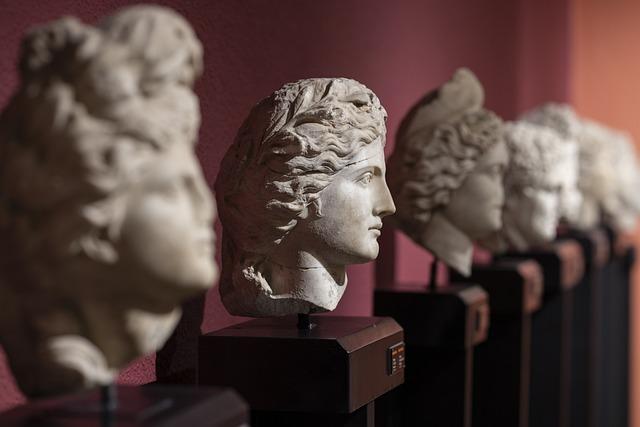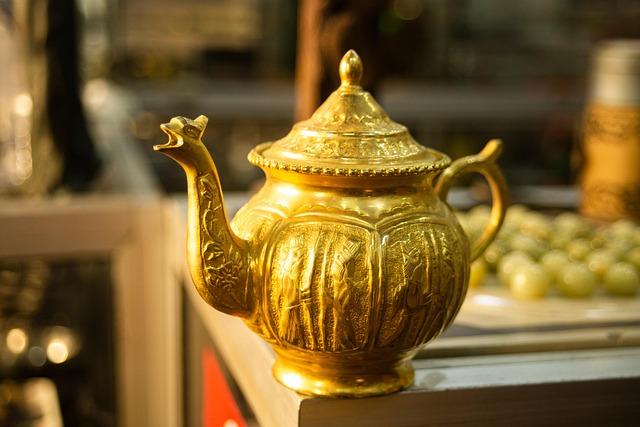In a compelling growth that raises significant ethical questions concerning the show of cultural artifacts,Participants of Parliament (MPs) in the United Kingdom have voiced robust opposition to the exhibition of Egyptian mummies in museums. This stance has sparked a broader debate in regards to the ethical duties of establishments that exhibit human stays, highlighting problems with provenance, recognize for the deceased, and the cultural heritage of Egypt. The dialogue, not too long ago reported through The Telegraph, underscores a rising consciousness of the wish to rethink the techniques wherein museums interact with artifacts that raise deep historic and religious importance. As public sentiment shifts against a extra respectful remedy of cultural legacies, this parliamentary movement might sign a pivotal second within the ongoing discussion concerning the ethics of museum practices and the significance of honoring the tales and contexts of historic civilizations.
Morality and Ethics of Showing Human Stays in Museums
The controversy surrounding the exhibition of human stays, in particular Egyptian mummies, delves deeply into the complexities of cultural recognize, consent, and the learning functions of such presentations. Critics argue that showcasing those preserved our bodies reduces them to mere artifacts, stripping away the wealthy cultural narratives and human dignity they constitute. Key issues within the discourse come with:
- Cultural Sensitivity: Mummies are integral to Egyptian historical past and their remedy in museums might battle with the ideals of descendants and communities.
- Knowledgeable Consent: The query of whether or not historic societies would have consented to their stays being exhibited is paramount to moral discussions.
- Respectful Portrayal: Attention should be given to how those presentations are offered to steer clear of sensationalism and make sure a deferential context.
Additionally, museums continuously sufficient advertise tutorial missions that justify the show of human stays as a method to foster figuring out of human historical past. On the other hand, this justification should be weighed in opposition to attainable penalties, akin to perpetuating colonial narratives or disrespecting ancestral ties. As discussions evolve,a framework that prioritizes moral issues over sensational shows might come with:
| Attention | Description |
|---|---|
| Cultural Collaboration | Involving descendant communities in curatorial choices. |
| Instructional Context | Presenting stays inside of a deferential historic framework. |
| Choices to Show | The use of era for digital exhibitions to maintain dignity. |
Cultural Sensitivity: The Have an effect on of Mummy Exhibitions on Egyptian Heritage

The continuing debate surrounding mummy exhibitions raises a very powerful questions in regards to the intersection of cultural illustration and moral duty. Critics argue that exhibiting mummies extracted from their historic context strips them in their dignity, lowering profound cultural icons to mere gadgets in a pitcher case. key issues come with:
- Cultural Misrepresentation: Mummies are sacred remnants of historic civilizations, representing extra then simply historical past; they embrace non secular ideals and practices.
- Public Sensitivity: Museum-goers would possibly not absolutely seize the cultural importance of mummies, resulting in a possible desensitization against Egyptian heritage.
- Repatriation Debates: Many argue that those artifacts must be returned to Egypt, as their removing perpetuates colonial narratives and undermines native heritage preservation efforts.
Additionally, the monetary motivations at the back of those exhibitions regularly overshadow the moral dilemmas at play. Museums might advertise those presentations as tutorial alternatives, but the earnings generated can inspire exploitation of cultural artifacts. A better exam of public opinion reveals a rising name for museums to undertake a extra respectful option to exhibiting such culturally delicate fabrics. The desk beneath summarizes contemporary survey findings on public sentiment referring to mummy exhibitions:
| Survey Side | Proportion of Respondents |
|---|---|
| In Desire of Mummy Exhibitions | 36% |
| In opposition to mummy Exhibitions | 52% |
| Unsure/Impartial | 12% |
The Position of Museums in Conserving Historical past as opposed to Public Sensation

The continuing debate surrounding the exhibition of Egyptian mummies highlights an important stress between holding historic artifacts and the sensationalism continuously sufficient related to their show. On one hand, museums are custodians of historical past, tasked with protecting artifacts that offer useful insights into historic civilizations. Via presenting those gadgets, establishments can teach the general public about cultural heritage and foster a better figuring out of our collective previous. On the other hand, critics argue that the show of human stays in a sensationalist way diminishes the consideration of the people represented. As an alternative of fostering recognize for the deceased and their cultures, it may possibly cut back their importance to mere points of interest supposed to attract crowds.
To deal with this complicated factor, a number of key ideas must information discussions across the moral duties of museums:
- Admire for Cultural Heritage: Artifacts must be handled with the reverence they deserve, acknowledging their cultural importance.
- Training over Sensation: Center of attention at the informative sides of the shows somewhat than their surprise worth to make sure guests interact meaningfully with the displayed pieces.
- Group Involvement: Participating with descendant communities can assist make certain that exhibitions honor the histories and ideology of the ones whose ancestors are represented.
Moreover, museums would possibly believe
| Exhibition Side | Attention |
|---|---|
| Show Strategies | Standard as opposed to immersive stories |
| Public Get admission to | Kid-pleasant content material as opposed to historic accuracy |
as a part of their strategic option to showcasing delicate cultural artifacts, thereby selling a extra moral and respectful attention of historical past.
MPs Name for Accountable Curatorial Practices making an allowance for Moral Considerations

In an important transfer reflecting rising moral issues, Participants of Parliament are urging museums to think again their curatorial practices in regards to the show of Egyptian mummies. emphasizing the significance of cultural sensitivity, those MPs argue that exhibiting human stays in a business context might put out of your mind the ideals and rituals of historic civilizations. This name for motion comes amidst expanding public scrutiny and an acknowledgment that many artifacts, in particular human stays, raise profound cultural and emotional importance that should be revered.
The MPs suggest developing a collection of tips for museums to make certain that exhibitions are carried out with utmost recognize and sensitivity. Those instructed tips come with:
- Knowledgeable Consent: Enticing with descendant communities to know their perspectives at the show of culturally important stays.
- Training and Consciousness: Offering tutorial content material that discusses the historic context and cultural importance of mummies past their bodily shape.
- Clinical and Moral Assessment: Organising committees to check exhibitions to make sure they align with moral requirements and recognize for human dignity.
The controversy over the moral implications of exhibiting Egyptian mummies highlights a broader dialog about cultural possession and illustration in museums. As those establishments try to steadiness tutorial goals with ethical duties, the discourse is evolving. Via adopting extra accountable curatorial practices, museums can function platforms for ethical engagement whilst fostering a deeper figuring out of the cultures they provide.
Selection Approaches to Showing Cultural Artifacts and Human Stays

The dialog surrounding the show of cultural artifacts and human stays has developed considerably, prompting a reconsideration of prevailing exhibition practices. As an alternative of viewing those gadgets simply as historic curiosities, establishments at the moment are inspired to manner them with cultural sensitivity and moral mindfulness. This comes to enticing with the descendant communities and acknowledging their perspectives at the show in their heritage. Establishments can put into effect approaches akin to:
- Collaborative Exhibitions: Partnering with native communities to curate shows that mirror their narratives and views.
- Virtual Shows: Using era to provide artifacts nearly, taking into account a broader target market whilst respecting cultural contexts.
- Group Workshops: Webhosting occasions that teach the general public concerning the cultural importance of artifacts and interact conversations about their remedy.
Additionally, museums can take inspiration from triumphant tasks that prioritize respectful illustration over mere show. Via adopting new frameworks,they may be able to foster a deeper figuring out of the artifacts’ cultural significance whilst combating the commodification of stays. Proposed fashions come with:
| Fashion | description |
|---|---|
| Storytelling Reveals | Showcasing artifacts thru narratives that spotlight the lives and cultures of the people they constitute. |
| Interactive Finding out Areas | Growing spaces the place guests can interact with the historical past and importance of the artifacts hands-on. |
| Cultural Advisory Forums | Organising committees of representatives from descendant communities to lead exhibition insurance policies and practices. |
Public Response and the Long run of Mummy Shows in British Museums

Fresh statements from Participants of Parliament have reignited a longstanding debate in regards to the ethics of exhibiting mummies in british museums. Critics argue that the exhibition of those historic stays disrespects cultural heritage and raises ethical dilemmas about possession and consent. The decision for museums to think again how they show mummies emphasizes the desire for larger sensitivity and recognize for the cultures from which those artifacts originate. Key issues from the general public discourse come with:
- moral issues: Many imagine that displaying human stays treats them as mere curiosities somewhat than respecting their historic importance.
- Cultural sensitivity: Native communities, in particular the ones from Egypt, continuously sufficient specific discontent over the show in their ancestors with out prior consent.
- Instructional worth vs. exhibition ethics: Whilst museums argue that those presentations serve an academic objective, many query whether or not this justification holds up in opposition to attainable ethical violations.
Taking a look forward, museums face pressures to innovate their approaches to historic artifacts.this will likely result in extra emphasis on digital exhibitions, interactive presentations, and academic outreach techniques that spotlight the narratives and recognize the identities of the cultures concerned. an very important a part of this motion comes to enticing with stakeholders, together with native communities and students, to make sure right kind illustration. This shift may well be mirrored within the evolution of museum practices, as defined within the following desk:
| Present Practices | Proposed Adjustments |
|---|---|
| Bodily presentations of mummies | Digital fact excursions that includes 3D fashions |
| Restricted group engagement | Collaborative exhibitions with Egyptian government |
| Conventional artifacts as focal issues | center of attention on cultural narratives and fresh relevance |
Long run Outlook
the talk surrounding the show of Egyptian mummies in museums has ignited important moral issues, as highlighted through contemporary statements from Participants of Parliament. Advocates for the repatriation of those historic stays argue that cultural heritage must be preserved in its rightful context, somewhat than being showcased as mere artifacts in international establishments.This dialogue raises fundamental questions concerning the morality of displaying human stays and the duties of museums to honor the cultural importance of the artifacts they area. As public sentiment continues to adapt, it’s crucial for establishments to interact in considerate discussion concerning the remedy of such pieces, making sure that the narratives surrounding them recognize their historic and cultural significance. The way forward for mummy presentations might hinge on those broader conversations about heritage, id, and moral stewardship within the world enviornment.
Source link : https://afric.news/2025/03/17/displaying-egyptian-mummies-in-museums-is-morally-wrong-say-mps-the-telegraph/
Writer : Mia Garcia
Put up date : 2025-03-17 22:34:00
Copyright for syndicated content material belongs to the related Source.



